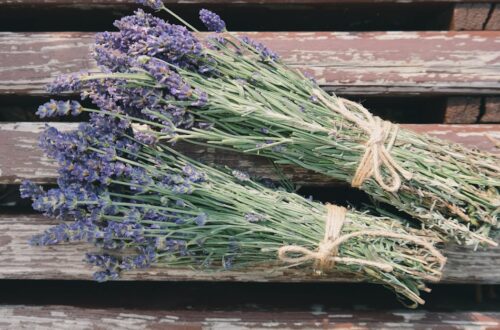As the chilly months roll in, many gardeners find themselves longing for the fresh vegetables that summer provided. However, there’s an option that is both practical and rewarding: growing vegetables in the winter indoors. This complete guide reveals the best techniques and methods to make indoor gardening successful during the cold season, allowing you to enjoy vibrant, homegrown produce year-round, regardless of the weather outside. From understanding essential light requirements to choosing the right containers, this article provides comprehensive insights for beginners and seasoned gardeners alike.
1. Understanding Indoor Gardening
Indoor gardening offers numerous advantages. For instance, it allows you to harness fresh produce even during the colder months, providing a sustainable food source when outdoor gardening is not feasible. Furthermore, growing plants in a controlled environment mitigates uncertainties related to weather conditions, enabling a more predictable yield. Studies reveal that indoor gardeners can produce vegetables year-round, benefiting not only from an increased harvest but also from the joy and therapeutic effects gardening provides. However, understanding the requirements for successful indoor vegetable growth is essential, especially in winter, when optimal conditions can be more challenging to maintain. This makes it vital to consider aspects like lighting, temperature, and humidity for ensuring healthy plants. Explore this rewarding endeavor as you enhance your skills in growing vegetables indoors during winter.
Benefits of Growing Vegetables Indoors
Aside from providing year-round fresh produce, indoor vegetable gardening can significantly reduce grocery expenses, enhance the home environment, and promote healthier eating habits.
Challenges of Winter Indoor Gardening
Despite its benefits, winter indoor gardening poses challenges such as maintaining adequate light and humidity levels, which can be critical for plant growth and yields.

2. Essential Equipment for Indoor Gardening
When embarking on the journey of growing vegetables in the winter indoors, having the correct equipment is crucial. Begin with choosing the right containers that provide adequate drainage and space for root development. Opt for pots made of material that retains warmth, such as ceramic or plastic.
Lighting is imperative in winter months; use full-spectrum grow lights designed for plants to ensure optimal growth. Position them to mimic natural sunlight exposure, and adjust the height as plants mature. Lastly, utilize high-quality soil enriched with organic fertilizers to provide essential nutrients. This combination of containers, lighting, and soil will set a solid foundation for successful indoor gardening.
Choosing the Right Containers
Select containers with drainage holes and the appropriate size for the plants you intend to grow.
Lighting Options and Solutions
Incorporate full-spectrum grow lights to simulate natural daylight for healthy plant growth.
Soil and Fertilization Essentials
Utilize nutrient-rich soil mixed with organic fertilizers to promote strong root growth.

3. Selecting the Right Vegetables
When selecting vegetables to grow indoors during winter, choose those that thrive in cooler temperatures and are suited for limited light conditions. Leafy greens such as kale, spinach, and lettuce are excellent choices, as they grow quickly and can yield multiple harvests. Root vegetables like radishes and carrots also perform well. Incorporating herbs like basil and parsley can enhance your kitchen garden and take advantage of indoor spaces. For successful results, consider using containers with good drainage and employ grow lights to supplement natural light. By focusing on these select vegetables, you can enjoy fresh produce all winter long, effectively mastering growing vegetables in the winter indoors before the season ends.
Best Vegetables for Winter Growing
The best vegetables typically include hardy greens and root crops that can withstand lower temperatures. Varieties like arugula, chard, and beets are particularly resilient.
Tips for Growing Leafy Greens
Ensure sufficient light and maintain a consistent watering routine to avoid wilting. Utilize organic fertilizer to enhance growth and nutrient absorption.

4. Planting and Maintenance Techniques
To successfully cultivate vegetables indoors during winter, mastering seed germination is crucial. Begin by using high-quality seeds that are suitable for indoor growth. Place them in a warm, well-lit area to ensure optimal germination conditions. Additionally, consider using seed trays with a breathable medium, as this promotes healthy root development. Once seedlings emerge, ensure they are properly spaced for maximum light exposure.
Watering is equally vital. Indoor humidity tends to be low in winter, so regularly check moisture levels in the soil. Using a humidity dome can help maintain ideal conditions. Aim to keep the soil consistently moist, but avoid overwatering, which can lead to root rot. These planting and maintenance techniques are essential for successful winter vegetable gardening indoors.
Seed Germination Tips
Select high-quality seeds and ensure proper temperature and lighting for optimal germination.
Watering and Humidity Control
Monitor soil moisture and consider using a humidity dome for ideal indoor conditions.

5. Pest Management Solutions
Managing pests effectively is crucial for successful indoor vegetable gardening during winter. Common indoor pests such as aphids, spider mites, and fungus gnats can harm your plants. A recent study found that 30% of indoor gardeners face pest issues, with improper care being a leading factor. To combat these pests, introduce natural predators like ladybugs or utilize insecticidal soap. Regular inspection can also help catch infestations early. When it comes to preventative measures, ensure good air circulation and avoid overwatering, which creates an ideal environment for pests. With proactive strategies, you can maintain a healthy indoor garden, ensuring robust growth of your winter vegetables.
Common Indoor Pests and How to Combat Them
Common pests like aphids and spider mites thrive indoors. To combat them, consider using neem oil or insecticidal soap, which are safe for indoor use and effective against these pests.
Preventative Measures for a Healthy Garden
Ensure proper air circulation and avoid overwatering to prevent pest infestations. Regularly inspect your plants to spot issues early for optimal health.

6. Harvesting Your Indoor Vegetables
Harvesting your indoor vegetables is a rewarding phase, marking the culmination of your efforts. Timing is crucial; leafy greens like lettuce are best harvested when young and tender, while root vegetables such as carrots should be picked once they reach the desired size. For optimal freshness and flavor, consider harvesting early in the morning when moisture levels are higher. Additional practices, like snipping outer leaves instead of uprooting plants, will encourage further growth. Protect the plant as you harvest, ensuring you only take what you need at that moment. Remember, monitoring your crops regularly not just helps in identifying when to harvest but can also prevent pests and diseases from affecting your bounty. Enjoy the fruits of your labor!
When to Harvest Different Crops
Different crops have varied maturity times. For instance, spinach can be harvested in about 6 weeks, while tomatoes may take 70-80 days.
Proper Harvesting Techniques
Use clean shears for leafy greens, and twist or pull gently on root vegetables to avoid damaging them.

7. Troubleshooting Common Issues
Indoor gardening can pose unique challenges, impacting the health of your plants. Common issues include inadequate light, overwatering, and pests. Insufficient light can lead to stunted growth and yellowing leaves, while overwatering often results in root rot. Pests, such as aphids or spider mites, can also hinder your plant’s development. By identifying these signs early, you can take corrective measures to ensure a thriving indoor garden. Remember, understanding these common issues is vital for anyone exploring the idea of growing vegetables in the winter indoors. Stay proactive and keep a watchful eye on your indoor plants to foster optimal growth and health.
Common Indoor Gardening Problems
Poor lighting, pest infestations, and over or under-watering are prevalent issues.
Solutions for Poor Growth
Increase light exposure, adjust watering schedules, and apply organic pest control methods.

Conclusion
Growing vegetables in the winter indoors can transform your gardening experience and yield fresh produce throughout the cold months. By utilizing this guide, even novice gardeners can achieve success, enjoying the fruits of their labor while enhancing their culinary creations with homegrown ingredients.






